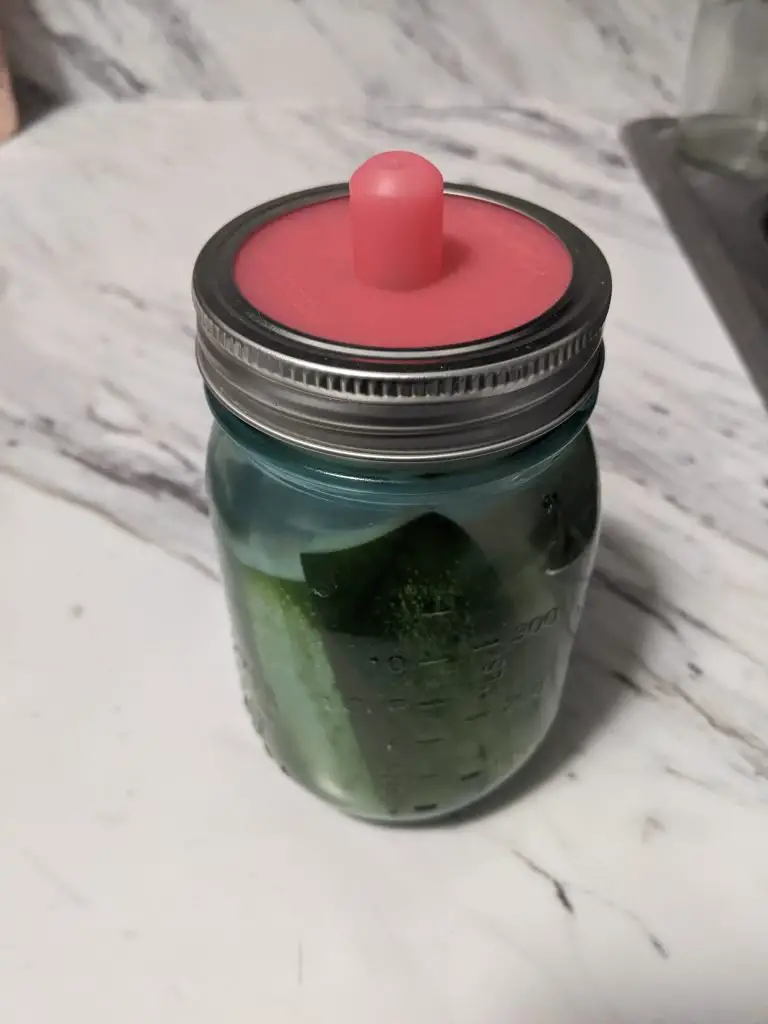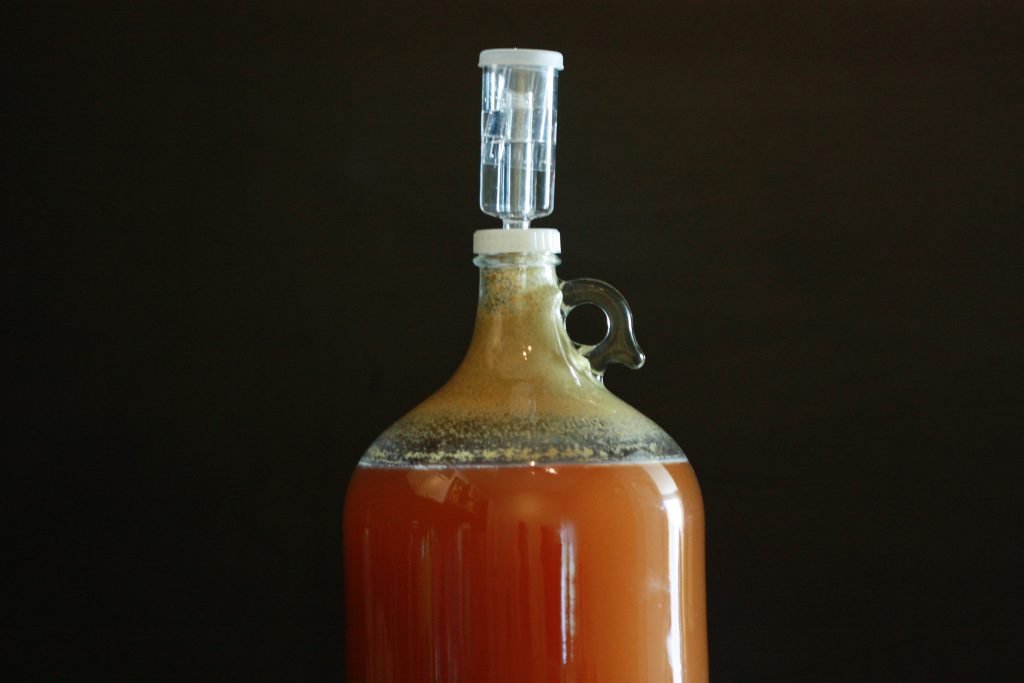There are many ways to vent your pickle jars during the fermentation phase. Some require upkeep, cleaning, and may even fail. A reusable option with no moving parts is the best choice.
What is the best option for venting your pickle jars? The best vent for fermented pickles is the Masontops Pickle Pipes. They are silicone, easy to clean, and have no moving parts. They also come in different sizes for wide or regular width lids, and come in nice pastel colors.
There are few different wants to vent your pickles. Some are more complicated or fancy looking than others. We will go through each of them and why they are important.

Why Do We Use Airlocks And Lids?
While most foods in jars have a lid to keep the food fresh, pickles have unique lids for venting purposes. When making fermented pickles, gasses collect inside the jar due to the fermentation process giving off carbon dioxide.
When this gas is given off while your pickles are being created, it can the water level to rise and if the jar is fully sealed, increase the pressure. While there are many different styles of airlocks, they are all intended to allow the gasses to vent from the jar but also keep air from getting into the jar and contaminating the pickles. This is achieved in part with a fermentation weight, which is used to keep the pickles submerged during fermentation so they are not exposed to air.
One Way Waterless Airlock
The simplest design of airlock, which is what Masontops Pickle Pipes are modeled after, is a one way waterless airlock. This means that it will self burp when the pressure of gasses inside the jar build up, but does not use a water barrier for the gas to travel through. If your pickles are being fermented in the jar and are under a weight like Pickle Pebbles, also made by Masontops, the brine itself will serve as that barrier.

Water Seal Air Lock
A water seal air lock uses water to create a seal around the lid. This is more commonly seen when using a crock, a stoneware bucket used for fermentation. Picture a moat of water around a medieval castle. Now picture this moat built into the lip of a lid where the cover sits into. Filling this groove with water allows gasses to escape through the water but keeping air out of the container.
One potential advantage of a water seal lock is having the water there to block fruit flies or other little pests that may try to get into your pickles. If you are using a one way waterless airlock with a jar of pickles fermenting on your kitchen counter, you will most likely not have risk of flies, fruit flies, etc.

Three Piece Water Style Airlock
A three piece waterless air lock works on a similar principle as a water seal lock but this is a modular approach that does not require a container with a groove built in to it. This approach is a lid with a tube feeding to a tank of water with tube like exit valve. This forces gas to escape through the water and creates a water barrier to prevent air contaminants or bugs from getting in to your pickles.
What Happens If I Do Not Use Any Airlock or Lid?
Assuming you use a weight to keep your pickles submerged during the fermentation process, you are exposing your brine to open air where debris, bugs, etc. could get in. Being in open air you risk developing what is referred to as ‘scum’ on top of the brine. Technically you could scrape this film off of the top of the brine but we highly recommend using some type of lid or airlock and not putting yourself into a position where this appears on top of your pickle brine.
Whatever your fermentation setup is, always remember to use clean and sanitized tools, washed and fresh cucumbers, and keep food safety top of mind. None of the different airlocks will produce a different taste, etc. so use one that you are comfortable with.
